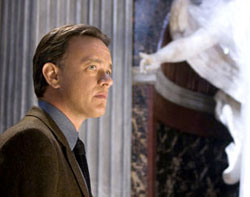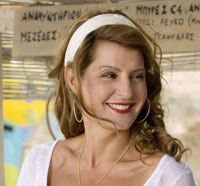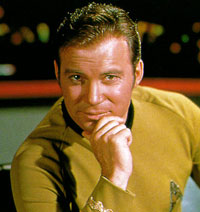 The movie version of Dan Brown’s Angels and Demons, opening May 15, follows symbologist Robert Langdon (Tom Hanks) in a desperate dash through Old Rome. A secret society called The Illuminati are executing Catholic Cardinals in brutal and meaningful ways, leaving behind clues that point to a coming catastrophe. Langdon must decipher messages left behind by Renaissance-era Illuminati in statues, paintings, and other artwork, if he hopes to save the city.
The movie version of Dan Brown’s Angels and Demons, opening May 15, follows symbologist Robert Langdon (Tom Hanks) in a desperate dash through Old Rome. A secret society called The Illuminati are executing Catholic Cardinals in brutal and meaningful ways, leaving behind clues that point to a coming catastrophe. Langdon must decipher messages left behind by Renaissance-era Illuminati in statues, paintings, and other artwork, if he hopes to save the city.
On a recent trip to Rome, I retraced Langdon’s fictional journey through very real places. Called “The Path of Illumination” the trip makes a cross across Rome, at least on the map. In a tour bus, it’s a bit more windy. For 56 Euros (about $75 U.S.), “The Official Angels and Demons Tour” takes tourists to all these sites, the guide reading aloud from a dog-eared copy of the book at each stop. Since Renaissance sculptor and architect Giovanni Lorenzo Bernini figures largely in the movie’s story, most of the stops feature his handiwork.
We started at the Piazza del Popolo. A plundered Egyptian obelisk, carved with mysterious hieroglyphics, towers over the plaza, apparently a marker of the Illuminati. As the story goes, the church St. Maria del Popolo is built on the burial site of the wicked Emperor Nero. Even after his death, evil spirits, in the form of jet-black crows, haunted a nearby walnut tree. The Pope tore down the spooky tree and sanctified the demonic site with a church way back in 1099. We step inside the cool, shadowy building, where every inch of wall, ceiling, and floor is decorated with amazing art: paintings by renowned artists Raphael and Caravaggio, among others, and an amazing Bernini statue of the prophet Habakuk and the Angel. The guide shows us a skeleton-decorated “demon hole”, a hole in the floor of the chapel by which they used to inter bodies. In the movie, this area plays an important role. Bernini’s angel is pointing us on our way and we’re back to the tour bus to follow.
We stop by St. Peter’s Square, outside the enormous Basilica of St. Peter. The symmetry and grandeur is impressive, but at this time there are more tourists then faithful. A man from Poland asks our group for directions. In the movie, a major event occurs here. I squint up at the window of the Sistine Chapel, where the smoke signal announcing a new Pope would appear.
We pile back on the bus to drive to the chapel Santa Maria della Vittoria. Built to commemorate some long-forgotten Papal military victory, the church is an explosion of Baroque art. The eye searches in vain for a quiet, restful spot. In the movie, Langdon finds another important event occurring at this location. But we’re here to see Bernini’s somewhat scandalous statue, St. Teresa in Ecstasy. An angel stands over a reclining Teresa, whose face is a perfect mask of incontrollable pleasure. St. Teresa’s writings led to hundreds of years of debate as to whether she described spiritual passion or pleasure of a more earthly variety. One of the angel’s arrows gives us our next direction. As we file by, joined by a noisy Japanese tour group, a Carmelite monk in brown robes scolds us in Italian. He reminds us all that this is a church which is to be respected, according to our guide, and we slink out.
On our way to the Fountain of the Four Rivers, fate intercedes. A protest in the street, something about the G-8 summit in Rome, forces to take another path. Straight into rush hour. Cars push into the smallest possible spaces, sometimes three across, sometimes four. We circle Rome for what seems like an hour. If Langdon was depending on us to help him save the city, Rome would be a flattened ruin by now. By the time we get to the fountain, it’s dark and cold. Hungry and shivering, we rush through the description and scurry back to the bus.
The last stop is the Castel St. Angelo, built back in the second century as a tomb for the Roman Emperor Hadrian, and then changed into a Papal military fortress. A “Bridge of Angels” spans the Tiber, leading to the Castel. Statues of angels, holding the crown of thorns, robe, and other objects of Christ’s passion, line our path. The Castel itself, a round multilayered building, has little decoration, strange in such a busily decorated city. A lone angel floats on its peak. One of the movie’s most important events happens here. It’s a beautiful spot, heavy with the passages of time, and once can easily imagine a mystic showdown here. Robert Langdon finds himself caught in the middle, and so, for a moment, am I.
–Rebecca Kelley


